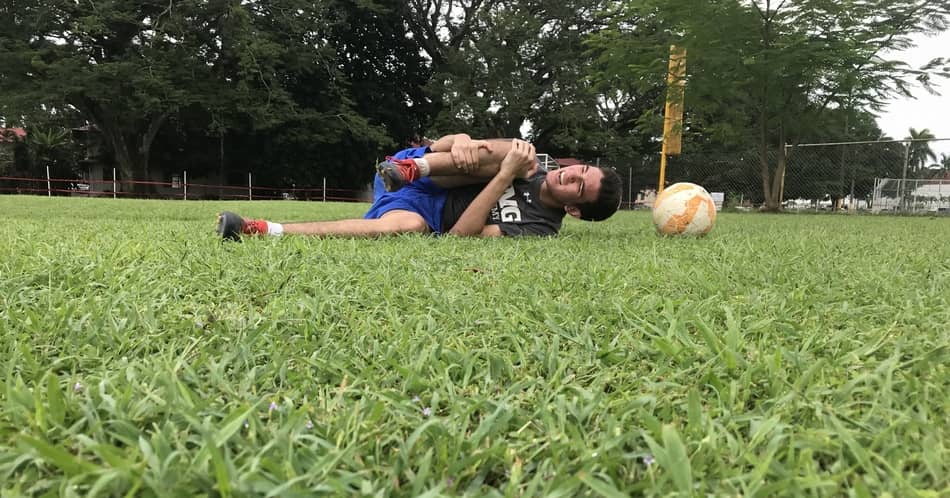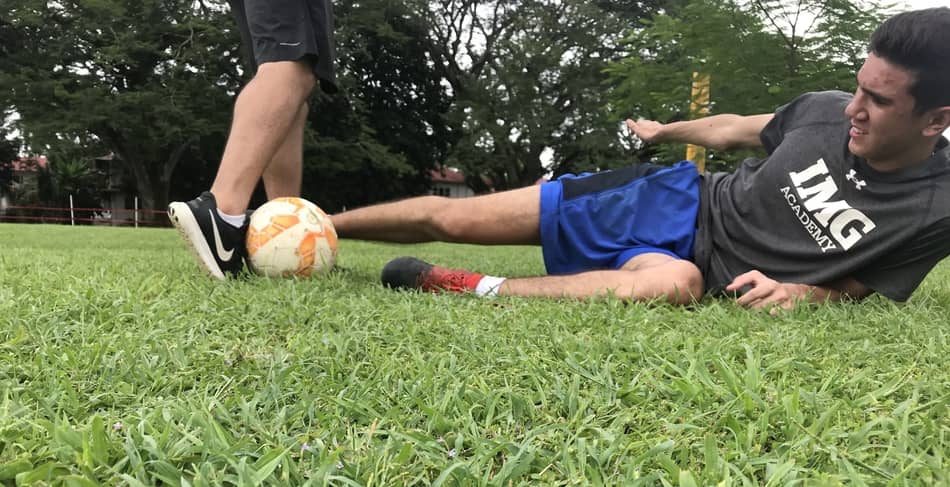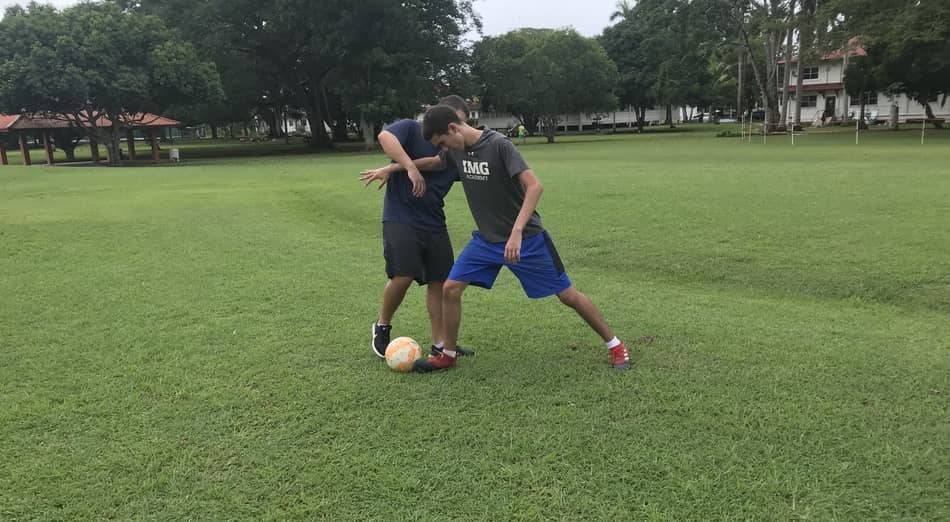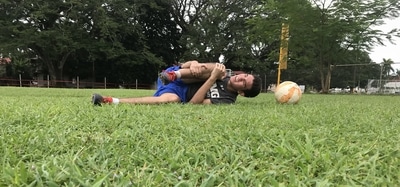
I noticed it is a common question among people who are interested in starting to play soccer to know if it is a dangerous sport. Or maybe you are a parent and you want your son or daughter to start playing soccer but you want to know if it is too risky for him or her. I’ ve been playing soccer since I was 3 years old, and, backed up with some little research of stats I did, I came up with this article for you guys.
So, is soccer a dangerous sport? As in any other CONTACT sport, there will be an amount of danger when playing the game. There is always the risk of suffering an injury as there is constantly an interaction with your opponents, the ball, and the field. The game happens so fast that an accident can happen any time.
However, there are other sports that are considerably more dangerous which is why soccer is a great pick as a sport to play for the youth.
In the other hand, when the time goes on, kids start to grow, and the game starts becoming tougher and tougher as the competitiveness increases. Certainly, soccer is not a super dangerous sport, but it is not for weak people either. You need to stand strong most of the time, otherwise you will be in more risk of suffering a serious injury.
Risks of playing the game
In my 15 years playing soccer I’ve been fortunate enough to never suffer a serious injury while playing. Although I’ve had some really annoying muscular injuries, and sprains, but nothing that has affected me in the long-term. However, I’ve witnessed teammates, and opponents suffering from serious injuries multiple times. Sometimes it’s just about luck.
In soccer you can get hit in many ways:
- A direct kick of the ball to any part of the body. It’s specially risky if the ball is kicked at a high-speed to the head as there is a danger of suffering a brain concussion. By the way, pray to god you are not hit in your testicles as it hurts A LOT. It is more common than you might think.
- A direct contact from the opponent with their elbow, knee, head or feet to any part of your body. Depending whether this contact was intentional or not the referee will penalize the opposing player with a red card or a yellow card. In soccer many of this contacts are not intentional. They just happen because of the inertia or speed of the game.
- In soccer, players use cleats to have a better traction on grass. Sometimes, players attempting to kick the ball, instead kick the opponents cleats or are stepped on by them. This is one of the most painful situations in the game as most pro players use metal cleats.
Always keep in mind that contact is permitted in soccer. It’s not like basketball or baseball that a little contact might trigger a foul. In soccer there are some game situations in which you have to use the strength of your body to win the ball, take it away from an opponent, or cover it to keep the other team from taking it away.
Anyhow, all contact is controlled and regulated until a certain limit as in every contact sport. In summary, you are allowed to use the body to protect the ball, or win a conflicted one, but you are not allowed to stretch your arm to push the opponent at any moment, to collide your body with excessive force with another player, or to use your feet to make another player trip. Sliding is also permitted but only when your intentions are solely to fight the ball and not injuring another player.
It is true there risks to playing this game, however, there are also countless benefits you can read at my “Benefits of playing soccer article” that make it totally worth it to take these risks.

Keep in mind soccer is VERY passionate
All sports wake up passion in people. However I really believe soccer fans and players make the sport one of the most, if not the most passionate in the world. This is obviously very good in one way but not good in another. Let me explain.
As I said before, at the beginning when kids start to play soccer it is a relatively safe sport. Little Kids don’t actually care that much if they win or lose. They just want to run behind a ball and kick it. They are there to make friends on their team and in the opposing team.
When kids start to grow, they become more and more competitive. With that competitiveness comes more passion and intensity for the game. When grown ups, those 50/50 balls start being fought with more toughness and fervor. Suddenly those bad calls from the refs start to matter when they realize they are being affected and might lose the game, and the other team players are no longer their friends.
When mature, there will always be some players that are more aggressive than others. They will play hard on the ball, not necessary on you, and you will have to stand strong through those hits. Some other times there will be players that will want to injure others and you will have to be careful with them.
I wanted to highlight this point because all of this factors: the fans, the passion for winning the game, the intensity, can cause many emotions in all the players that sometimes are hard to control. Desperation can cause aggressive fouls, dirty plays, and fights between players and the refs.
All of this is not exclusive to soccer, it can happen at any sport. However, I truly believe that in soccer there is a greater probability of this happening because of the great passion and the intensity this game is played at. To play this game you have to be strong, not only physically, but also mentally.
Don’t get confused, soccer is not a dangerous sport, it’s the most beautiful one in the world exactly because of that passion that I mentioned before.
Stats of injuries related to soccer
I might be able to talk to you for hours to try to describe how dangerous soccer really is, but I find that some stats about soccer-related injuries may help a lot more to illustrate the topic.
- According to the NCAA, during the 2008-2009 seasons, the injury rate among college soccer players in the United States was about 7.7 from every 1000 athlete exposure. This stat includes both trainings and games.
- 5.5% of all injuries were concussions, 4.3% were head, face or neck injuries, 6.2% were injuries located in the upper limb (arms, fingers, chest, etc), 14.7% were torso and pelvis injuries, 65.6% were lower limb injuries (hamstrings, shin, knee, feet, etc), and 3.7% were considered as “other” type of injury.
For me this last stat is very interesting and needs to be highlighted. During the last years, it has become common among parents to think that their kids can be in some serious risk of suffering concussions from playing soccer because soccer players are heading the ball constantly. In fact, I once read some news saying that, in a youth league in the US, they had forbidden kids under certain age to head the ball. Which for me is ridiculous and ruins the essence of the game.
In this stat we can appreciate that concussions only correspond to 5.5% of injuries in soccer. And I can bet that most of those concussions are not even related to players heading the ball. They might be caused by head to head collisions with other players or taking a direct hit from the ball at exaggerated speeds to the head.
So if you think that concussions are one of the major dangers of playing soccer, you might want to think again as players are more likely to suffer from an injury in the lower limb than any other part of their body. Besides, heading the ball is something completely normal as has been done since the game begun to played.
Other interesting stats are:
- In United States college soccer there were 55,000 thousand injuries from more than 7 million athlete exposures during the lapse of 5 years.
- The most common injuries in soccer are: Muscle strains (25.8%), ligament sprains (25.3%), and contusions (20.3%).
- ACL injuries in soccer account for only 0.4% of all injuries. This stat is from the year 2009. We are starting to see this injury happen more and more everyday in soccer, so probably the percentage might have increased. This is one of the most serious injuries in the game and the one that takes the most time to recover (250-300) days. Some famous players like Ronaldo Nazario and Radamel Falcao have suffered this injury.
- 42.3% of injuries occurred by contact with another player and one-third happened with no contact at all. It is very common to see this no-contact injuries at track and field competitions also.
What is the most dangerous position to play at?
Statistically talking, we could say there is no position that is riskier than others. According to the NCAA, the injuries in the field were equally distributed among all players.
Now, leaving stats to the side and talking realistically, I think it is fair to say that goalkeepers are exposed to more danger than other positions. Goalkeepers are the position in the field that gambles the physic for the team the most. Sometimes, goalkeepers will have to stop the fast-moving balls from going into the goal using their face or even their intimate parts.
GK’s are the ones that need to intervene with the most intensity and toughness in those 50/50 balls. If they make a mistake and play it soft, probably the other team will score a goal.
Can I die playing soccer?
Well, yes. You can die playing soccer. As well as playing any other sport. It’s true, we have witnessed horrible and traumatic videos of players that have died in the soccer field. I have to be honest, after watching those videos I had hard times thinking about all the dangers soccer represents. Because of the impact of those videos, I had the same concern as you for a moment, the person that searched this on google.
But this phenomenon is super strange, promise. On average, sudden death on a football field might happen to 1 out of every 40,000 student-athletes, being sudden cardiac deaths or heart attacks the leading cause. But players that have died because of this, sometimes, already had presented some type of cardiac problem in the past.
In my years playing soccer I’ve witnessed everything: from players having epilepsy convulsion attacks, to players having their tibia broken, but never ever, have I witnessed someone die on a football/soccer field. In fact, this phenomenon happens a lot more in other sports like baseball or american football than in soccer.
What about kids?
According to John Hopkins medicine, in 2009 they treated 88,000 soccer-related injuries from kids aging between 5 to 14 years old. Which was still less than basketball (170,000 children), baseball (110,000 children), and football (215,000 children).
Baseball vs Soccer. Wich one is safer?
Baseball has a lower injury rate than soccer at 3.61 injuries out of 1000 athlete exposures compared to the 7.7 injury rate from soccer. However, injuries from baseball players are a lot worse than soccer injuries. Baseball has the highest number of fatalities for children ranging from 5 to 14 years old, having 3 to 4 kids die each year, being the most common cause of death: Brain injury.
In baseball 45% of injuries were to the upper limb, compared to soccer in which only 6.2% were to this part of the body. Being the most common injuries ankle sprains, upper leg strains, and shoulder sprains.
In baseball, 45% of injuries are produced by contact, and 42% are non-contact injuries. As you can see, non-contact injuries are more common in baseball than in soccer.
In conclusion, you are more likely to have an injury playing soccer than baseball as it is a sport in which there is more contact with other players. It is true you are less likely to get injured in baseball, but if you do get injured it would probably be a more serious injury than one from soccer. For example: a direct hit from a baseball to your head, even wearing a helmet, is a lot worse than having a contusion due to a collision with a another soccer player.
Basketball vs soccer
The injury rate of basketball is of 9.9 injuries out of each 1000 athlete exposures, which is superior to the 7.7 rate in which soccer stands. 170,000 were the number of kids the attended an emergency room due to basketball-related injuries from kids 5 to 14 years old. This is significantly more than soccer, but we have to consider the fact that basketball is played considerably more than soccer in the United States.
Overall, I would say that Basketball is a sport that is very alike to soccer. Also, in both sports most injuries happen in the lower limb (ankle sprains, knee injuries, etc).
I’ve played both sports for years and I can say that both are very physical and tough sports. However, I would say soccer is slightly tougher and requires a little bit more the use of the body strength in some situations. Soccer players like a lot more the contact and that characteristic roughness for the ball than basketball players. Saying this, I wouldn’t qualify none of the two to be super dangerous sports.
American Football vs Soccer
American football has an injury rate of 8.1 injuries per every thousand athlete exposures. There were 41,000 injuries from 25 million athlete exposures during the lapse of 5 years in the NCAA. Comparing to the soccer stats from the same years and the same institution (NCAA), American football has a higher injury rate but, surprisingly, soccer had more injuries overall.
Injuries distribute along the body in a similar way as soccer injuries, being the lower limb at 50.4% the area of the body where the most injuries occur. However, you are more likely to have a concussion playing football (7.4%) than playing soccer.
Where I believe is the biggest difference is when it comes to catastrophic injuries. Normally, soccer has few to none of this type of injuries than can significantly affect the life’s health of a player in the long-term. In the other hand, NCAA american football reported to have 23 non-fatal direct catastrophic injuries during said period, and 11 fatalities from indirect catastrophic injuries. Also, including 3 life-changing catastrophic spinal cord injuries. Besides, according to John Hopkins, they received 215,000 kids ranging from 5 to 14 in emergency rooms, which is more than double the number of soccer (88,000).
American football is a very dangerous sport. It is aggressive, and while playing it you are a lot more likely to suffer from a life-changing fatal injury. In comparison to this sport, soccer is significantly safer and more suitable for the youth to play without suffering any permanent damage.

Protection Tips for soccer
I’ve always said that protection always depends on you and what type of player you are. If you are a more aggressive player and always make brute force entrances, then probably you are more likely to suffer from an injury. In the other hand, if you play aggressively, but always with caution and intelligence to safeguard your physical integrity, probably you are least likely to suffer an injury.
You can read my article: “How to Prevent Soccer Injuries” to have complete guide on how to get injured less in soccer.
However, sometimes it doesn’t depends on us. Here are a couple of tips to feel a little more protected in the soccer field:
- Always wear your shin guards. It’s the most important and only protection gear that is fundamental to playing soccer. You have no idea how many times I’ve been kicked super hard in the shin and thanked god that I had my shin guards on. Not only that, but having shin guards makes you feel more secure and protected to play with more intensity, knowing you are least likely to suffer an injury if something goes wrong. This are the shin guards I recommend and the ones I use to stay protected.
- Fair play is key. When playing clean and always applying the fair play, all 22 players in the field are less likely to suffer an injury. Injuries normally come at warmed up soccer games where you can feel the tension in the atmosphere, and when players start getting dirty. Normally, soccer players don’t like having a dirty foul committed to them and they will return the favor any time. So keep it calmed and fair play for everyone’s good.
- Common sense is key. Always use it in those 50/50 balls against other players and always ask yourself first if it’s worth to run the risk of getting injured for that ball. Only play your physic when necessary for the team.
In my recommended protection gear I talk about other gear you can use to keep yourself safe when playing soccer. You can click the link to learn more about soccer gear that can significantly decrease the risk of suffering injuries when playing the sport.
Related Questions
What is the most dangerous sport in the world? When it comes to this question, the most dangerous sports in the world would be combat sports. Toping the list are Mixed Martial and boxing. Statiscally talking, we could say that boxing is the most dangerous from the two, surprisingly.
Although 60% of MMA fighters sustain injuries over only 50% of boxers, 7% of boxers have lost consciousness or had a severe eye injury compared to 4% in MMA fighters. Which makes sense considering MMA involves hitting different parts of the body while boxing focuses on hitting directly to the head, with forces ranging 600-1100 pounds of force. Which is why we could say Boxing is the most dangerous sport in the world.
What is the safest sport in the world? For parents that want their kids to be physically active, but don’t want them to be exposed to any risk, then any non-contact sport is a solid choice. Sports like: Tennis, swimming, golf, track and field, and table tennis, among others, are all good choices in which you are less likely to suffer from a serious injury. Don’t get me wrong, you can definitely get injured playing any of this sport, but hopefully injuries will be a lot less serious than in other contact sports.

